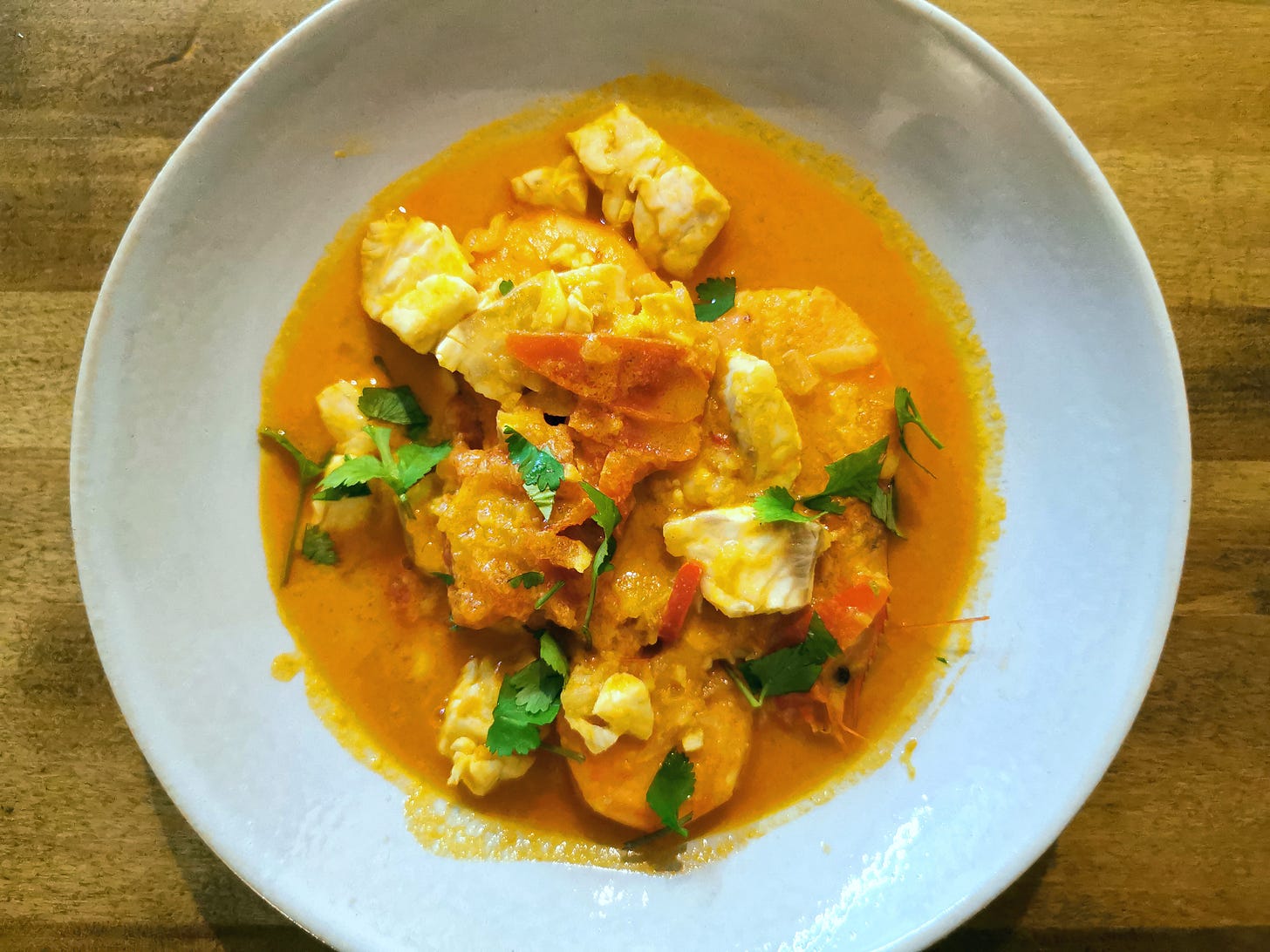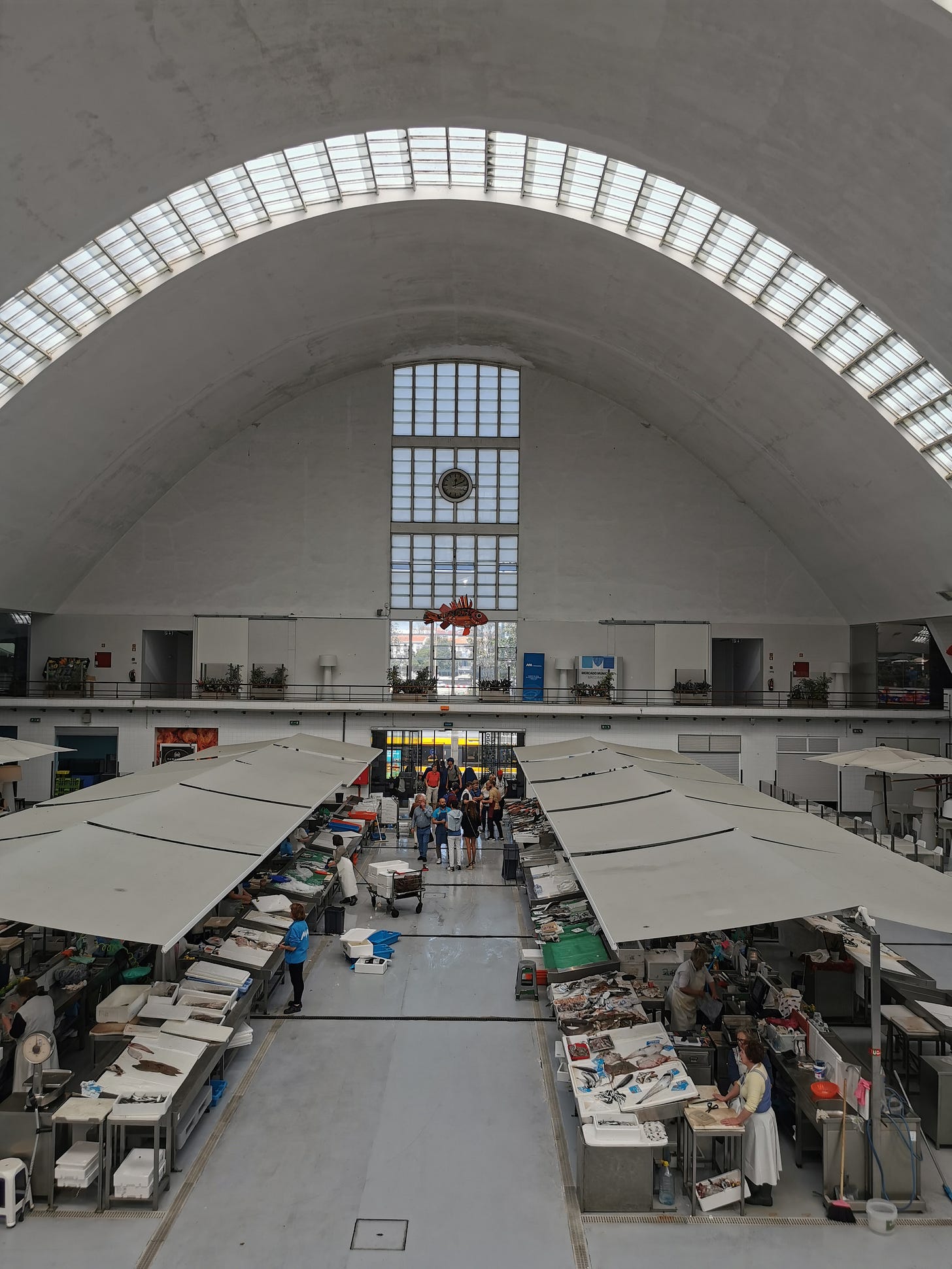Welcome to The Sauce, deep travels through food and drink culture written by me, Charlie Brown, founder and former owner of what was once named Britain’s best independent wine store.
I’ll teach you how to cook better. How to buy better drinks. How to cope with wine culture when it threatens to overwhelm you.
Friday is recipe day. Today isn’t just one recipe but five. The first is for everyone, the remaining four are for paid subscribers only.
The Sauce is 100% reader-supported. For $5 a month or $50 a year, you’ll get access to hundreds of recipes and an ever-increasing number of food and wine commentaries and articles, as well as discounts on my remote wine consulting service.
One of the happy-surprising things that has happened to me since moving to Portugal is my exposure to Brazilian culture.
Unsurprisingly there are many Brazilians in Porgual — they make up the largest foreign population here — and I’m happy to call a few of them my friends.
And with Brazilian friends comes Brazilian food.
I think it would be fair to say Brazilian food isn’t especially well-known and I quickly learned what a shame that is. Because it is really freaking good. The first time I tried dadinhos — cubes of deep-fried tapioca and cheese — you couldn’t pry me away from the bowl.
Then, at a friend’s birthday party, I discovered Moqueca.
Moqueca is a fish and coconut stew from the coastal state of Bahia in northern Brazil. According to Wikipedia, its origins are unknown but it seems to have come with Portuguese traders from Africa. Hence the use of ingredients like coconut milk and palm oil (check the notes section for more information on using — or not using — palm oil).
It’s the sort of dish that makes you think about how recipes and ingredients travel around the world. A dish with coconut milk, lime, tomatoes, and fish could just as easily be Goan or even Thai.
But this time, that flavour combo belongs to the Brazilians. And soon, it’ll belong to you too.
First, a note on recipe photography
About that rather awful photo of Moqueca that heads this mailout. It’s not my finest work.
There’s been a lot of chat around Substack lately about the usefulness of recipes and specifically, the place of photography in food writing.
Should all recipes have stunning, professional photos or should you be able to make a recipe without? When does recipe writing become more about the photo than the process of writing itself?
I’ve been working on my Moqueca recipe for a while now and the day came this week to make the dish I was going to photograph. The problem was, life took over so I had to make it late in the day which meant no natural light.
I had to photograph it in the yellow light of my kitchen. Not to mention the plating was not my finest work. It’s sloppy around the sides and I forgot the coriander.
The photos are terrible. But they’re the only ones I have.
I had to ask myself, is this the photo I want to use? Should I re-make the stew yet again and re-photograph? That would mean a) the recipe would be late going out and b) I would have to return to the fish market nearly an hour away.
All because of a bad photo. Not a bad recipe.
Then I remembered. I am first and foremost a writer, not a photographer. Photographing food has never been my strong point, making it has.
The stew tastes great regardless of my crappy photography skills. So you’re getting the bad photo. And the recipe can go out on time.
This is a whack-it-in, don’t worry too much about the quantities kind of stew. Like tomatoes? Great, stick more in. Don’t like bell pepper? Leave it out. Swap the shrimp for clams or leave them out entirely. Use whatever firm fish you can find. Essentially, anything goes.
It goes without saying to source the freshest fish you can. This is when living in a coastal city has its advantages because it gave me an excuse to visit my local fish market in Matosinhos, the coastal part of Porto. I’ve never visited a better fish market than this one, both in terms of the quality of fish and the market hall itself:
If you can’t source fresh fish, there are alternatives. Whilst the Bahia version of Moqueca uses fish and shrimp, some versions — usually from the neighbouring Espirito Santo region — use chicken or plantain. Check the variations section below the recipe for more info.
I like to de-vein my shrimp and I do that by cutting down the back of the shrimp whilst its shell is still on, then pulling out the tract. Be careful, the knife can easily slip.
You can also use shell-off shrimp. They will take less time to cook so put them in last, just a couple of minutes before you serve.
You want to reduce the stew to serving consistency before you add the fish and shrimp because they will release water and juices into the stew. How thick is entirely up to you — anything from clinging to the vegetables to a light broth works. I went for something in-between, around the consistency of a thick potato soup.
Brazil uses a lot of palm oil and it’s traditionally used in Moqueca. It gives an incredible red colour to the dish. However, I understand that a) there is an ethical/environmental implication with using palm oil and b) there’s not much point in buying it to make just one dish. I used coconut oil to make my Moqueca but you can also use olive oil.
Be mindful that without palm oil you won’t get that red colour to the dish, so many recipes (including mine) will include some paprika and/or turmeric to lend colour and depth.
Serves 4
Keep reading with a 7-day free trial
Subscribe to The Sauce to keep reading this post and get 7 days of free access to the full post archives.








